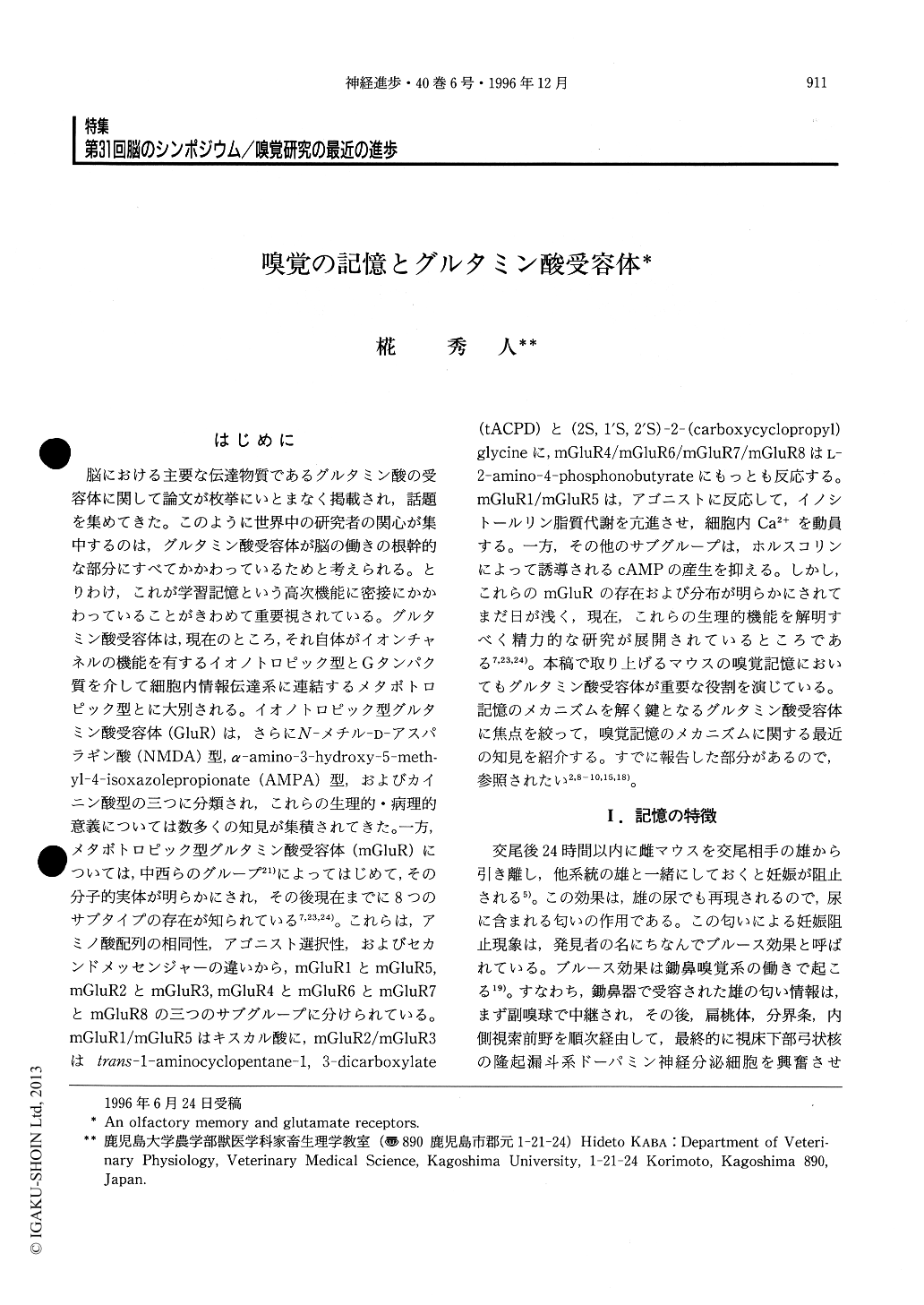Japanese
English
- 有料閲覧
- Abstract 文献概要
- 1ページ目 Look Inside
はじめに
脳における主要な伝達物質であるグルタミン酸の受容体に関して論文が枚挙にいとまなく掲載され,話題を集めてきた。このように世界中の研究者の関心が集中するのは,グルタミン酸受容体が脳の働きの根幹的な部分にすべてかかわっているためと考えられる。とりわけ,これが学習記憶という高次機能に密接にかかわっていることがきわめて重要視されている。グルタミン酸受容体は,現在のところ,それ自体がイオンチャネルの機能を有するイオノトロピック型とGタンパク質を介して細胞内情報伝達系に連結するメタボトロピック型とに大別される。イオノトロピック型グルタミン酸受容体(GluR)は,さらにN-メチル-D-アスパラギン酸(NMDA)型,α-amino-3-hydroxy-5-meth-yl-4-isoxazolepropionate(AMPA)型,およびカイニン酸型の三つに分類され,これらの生理的・病理的意義については数多くの知見が集積されてきた。一方,メタボトロピック型グルタミン酸受容体(mGluR)については,中西らのグループ21)によってはじめて,その分子的実体が明らかにされ,その後現在までに8つのサブタイプの存在が知られている7,23,24)。
Female mice form an olfactory memory of the pheromones of the male with which they mate. This olfactory memory is of critical biological importance, because it prevents any subsequent exposure to this male's pheromones from initiating neuroendocrine mechanisms that would terminate pregnancy. Pheromones from strange males, for which no memory has been formed, induce pregnancy block byactivating the accessory olfactory system by way of the vomeronasal receptors.

Copyright © 1996, Igaku-Shoin Ltd. All rights reserved.


